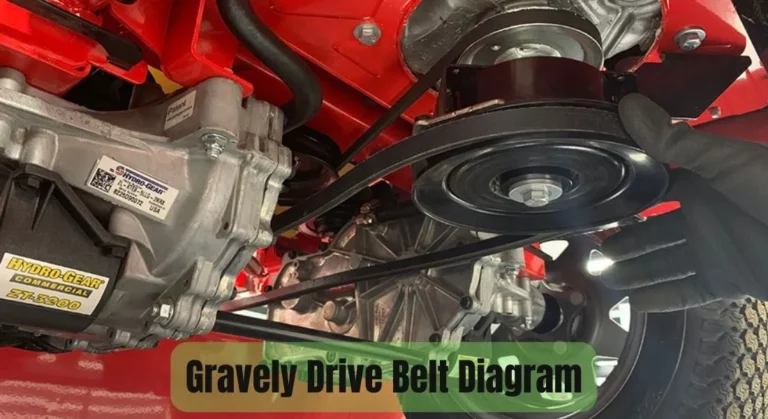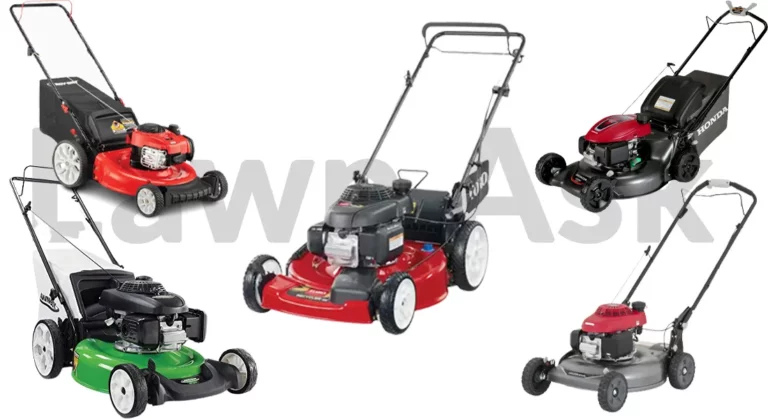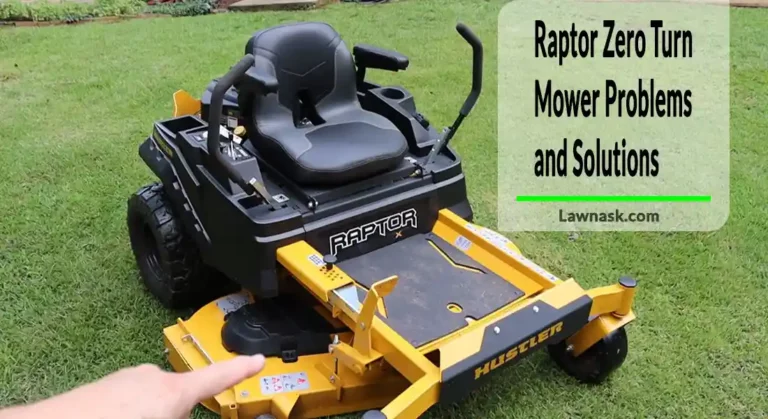What Is A Mower Blade Balancer Used For?
In the world of precision lawn care, where every blade counts, the role of a mower blade balancer emerges as a quiet hero.
A mower blade balancer is a tool used to verify the blade’s balance. This seemingly humble tool holds the power to bring harmony to the cutting blades, ensuring a smooth and balanced operation that unleashes the full potential of a lawnmower.
So, what exactly does a mower blade balancer do? Let’s dive into the fascinating world of precision balance and discover what is a mower blade balancer used for and how this little device revolutionizes the art of lawn maintenance.
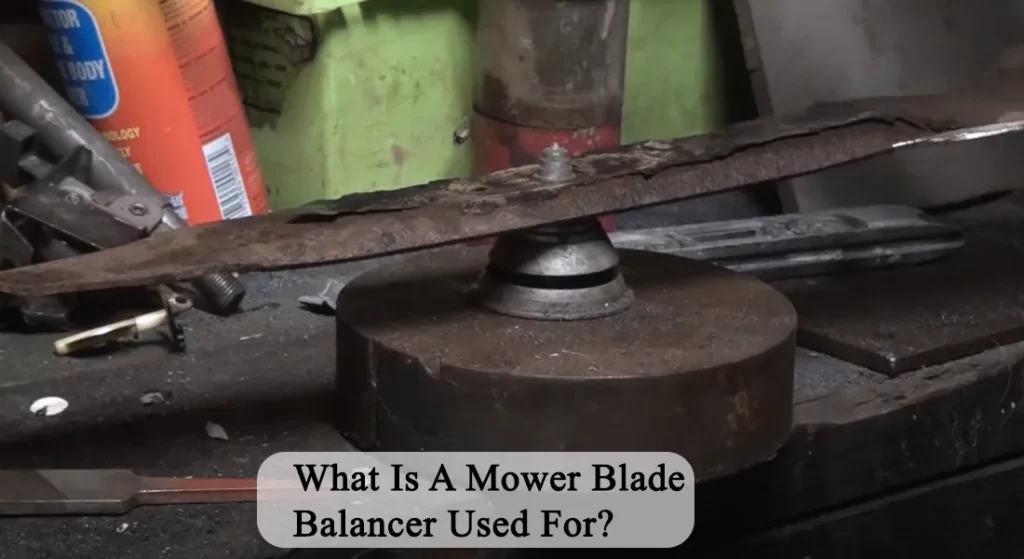
What Is A Blade Balancer On A Lawn Mower?
Lawn mowers include blade balancer equipment that can be used to manually check and balance the blades. The most common shapes for these instruments are cones and magnetic balancers.
The blade is usually hung from a magnetic mount or a cone. It is possible to determine which side of the blade is heavier by observing how it rests and tips on the balancer.
The main function of the blade balancer on a lawnmower is to ensure that the blade is correctly balanced during operation
To lessen vibration and engine wear, blade balancers are typically used after sharpening lawnmower blades.
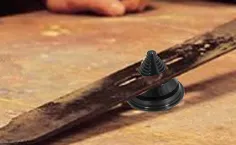
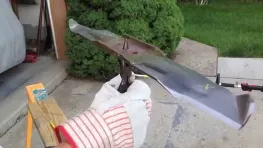
Why Do You Need To Balance Mower Blades?
A lawnmower with an unbalanced blade won’t last as long or do a good of a job cutting the grass. To ensure that your mower’s blades are always performing at peak efficiency, you should balance them.
When you balance your blades, you make sure that the blade’s mass is spread uniformly down its length. If more metal is ground off of one side of the blade than the other, the blade will become imbalanced.
Depending on the particular mower type and its settings, a mower blade’s spinning speed can change. Typically, lawnmower blades rotate between 2,500 and 3,500 revolutions per minute (RPM). Using an unbalanced blade can lead to serious consequences for both the lawn mower engine and blade shaft. The resulting stress can cause the shaft to break, posing a significant danger to the user and anyone in the vicinity.
In the event that the shaft does not break, the engine could still suffer significant harm, resulting in the need for a replacement mower.
You need to balance the mower blades to make sure it runs smoothly and efficiently. When the blades are balanced, they spin without wobbling or putting stress on the mower’s other parts.
This not only increases cutting performance by maintaining a consistent cutting height, but it also decreases the mower’s workload, extending its service life. Mowing using blades that are properly balanced is easier and more effective in general.
How To Know If The Lawn Mower Blade Is Unbalanced?
If your mower blade is out of balance, you’ll be able to tell by the following obvious symptoms.
- Unbalanced blades can cause the mower to vibrate excessively, especially in the handles.
- When in use, unbalanced blades can make a variety of strange and sometimes alarming noises. An imbalanced mower blade may be the cause of an increase in loudness or strange noises coming from the mower.
- Grass that is mowed unevenly or not at all by your mower may be the consequence of blades that are not properly balanced.
If you happen to come across any of these warning signs, it’s important to balance the blade of your lawn mower without delay. Neglecting an unbalanced mower blade could result in severe damage to your mowing machine.
Related Post: Is It Worth Sharpening Lawn Mower Blades?
How To Use A Blade Balancer To Balance Your Mower Blade?
Unbalanced mower blades cause excessive vibrations, uneven cutting, and uncut or uneven grass, harming the lawn’s beauty. It may shorten the mower’s lifespan by stressing the engine and other elements. The following procedures will assist you in balancing the blade to prevent these issues:
Step-1 Gather tools and Materials and Turn off the Mower
Before beginning, it’s important to gather all the necessary tools and equipment.
You may need –
- Blade sharpening tool: grinder, file, or sharpening stone
- Safety glasses
- Steel wire brush
- Wrench
- Blade holder
- Gloves
- Blade Balancer (household items can be also used)
Make sure the mower is turned off and disconnect the spark plug wire to avoid any accidental starting.
Step-2 Remove the Blade
Remove the mower blade from the mower deck and carefully pull it out. Use a wrench to remove the blade. Note down the blade’s orientation for reinstallation.
Also, you can refer to the manual to determine how to remove the blade.
Step-3 Balance the Blade
Next, it must be balanced on a point to determine which side of the blade holds the excess steel. The concept is to hang the blade so that it can be balanced easily.
You can use either household item like a nail or a blade balancer tool.
Using a nail in the wall:
Put a big nail in the wall of your garage or shed with a hammer. Then, center the opening in the blade above the nail head to achieve proper blade balance on the nail base.
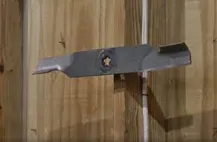
Note: When it comes to maintaining a lawnmower blade, the “nail in the wall” method is not very reliable. However, it is a widespread method.
Using a blade balancer:
Get yourself a blade balancer, a tool made for just this kind of job. A cone or magnetic mount are common components.
Ensure the blade is firmly fastened to the balancer before proceeding. The balancer will permit the blade to freely dangle.
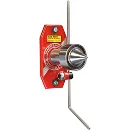
Step-4 Observe Balance
Finding the heavier side of your blade requires placing it on a balancer. If the blade is unbalanced, it is because one side has more weight than the other. If the blade is centered, it is completely balanced.
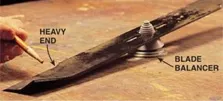
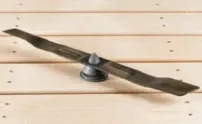
Step-5 File the Blade
Once you have identified the side of the blade that is heavier, it’s time to take the blade off the nail and securely fasten it to a workspace or other stable surface. It is important to keep track of the heavy part of the blade.
To achieve a polished and refined look, it is recommended to use a smooth file to file down the edges of the heavier section of the blade.
When filing your blade, it’s important to maintain the normal angle of the edge. This will ensure that your blade remains sharp and effective.
Related Post: Blade Position on 3 Blade Mower Deck for A Top-quality Cut
Step-6 Re-check Balance
Continue the procedure of balancing the blade until it can be hung in a straight line without leaning to either side.
Step-7 Re-install the Blade
After you’ve double-checked that your blade is perfectly balanced, go for a spin. Reinstall the blade carefully, then use the wrench to snug it down. Reconnect the wires and you’ll be back in business.
What Are The Top Lawn Mower Blade Balancers?
There are numerous reliable and user-friendly blade balancers on the market for your worn and unbalanced blades.
Here are 3 top blade balancer that are widely used and very rated.
| Blade balancer | Mount type | Description | Price |
| Precise Blade Balancer by Oregon | Wall mount | This balancer is made to work with a wide variety of lawnmower models. Superior zinc die-casting ensures these cones survive longer than any plastic or other metal option. | Around $165 |
| MAG-1000 Professional Blade Balancing Instrument | Wall mount | This one features a pull magnet that can support 120 pounds of blade weight. Verifies the blades of lawnmowers and other rotating components if they are properly balanced and aligned. | $170-$220 |
| MAXPOWER 339075B Magnetic Wall Mount Blade Balancer | Wall mount | Six magnets allow for greater stability, Converts to a magnetic wall-mounted blade balancer, of superior construction. Similar to Oregon. | Around $135 |
Before making a purchase, remember to conduct research and comparisons, read customer reviews, and consider your specific requirements.
Related Posts:
- Sharpening Lawn Mower Blades: The Ultimate Guide
- Mulching Blades vs. Traditional Blades: Pros and Cons
- Mastering Blade Position: Achieving a Top-Quality Cut with a 3 Blade Mower Deck
- Lawn Mower Blades: The Ultimate Guide for All Your Questions
- Fixing the Problem: Tips to Increase Lawn Mower Blade Speed

